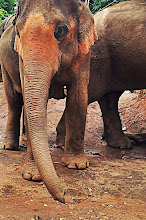Lauderdale House is no Coke or Pepsi, but regardless of its size, it is still a brand. What makes that brand? Is it the name? The logo? The pictures that are associated with it? Technically, it's all of the above, but at the same time, it's much more. One of the biggest aspects of a brand is the emotional and personal feelings an individual attaches to it (Moustakas, 2009), which is especially relevant to an organization whose main focus is the arts. A brand should answer the question of "who are we?" but at the same time have an answer which reaches beyond the a simple definition (Bradfield, n/a). Lauderdale House encompasses arts education while providing a place for memories to be made and emotions to be expressed. Most visitors to the House first stepped through its doors as children, thus having developing an attachment from an early age (Heritage Lottery Application, 2009). Those individuals may see the brand of Lauderdale House as where they were inspired by a painting or music, or a house which provided them with a place to hold their wedding: a place which is more than a description on a website. Some might view it as simply a beautiful house in a park or a name on a brochure. With these different perceptions of the brand, the House needs to make sure to upkeep their activities while making them more visible and public, letting their brand develop while building upon those diverse perceptions. If the association individuals build is a positive one, why not let one have a unique perception of Lauderdale House? With this, the brand will truly be as unique as the House itself, and in a globalized society, who wouldn't want a bit of distinction?
Lauderdale House, 2009. Heritage Lottery Application 2009, London: Lauderdale House.
Bradfield, J., n/a. Brand on the run [Online] Arts Marketing Association. Available at: http://www.a-m-a.org.uk/casestudy.asp?id=120 [Accessed 1 December 2009].
Moustakas, E., 2009. Branding Strategies and Media Planning [Lecture](Personal Communication, 1 December 2009).
Tuesday, 1 December 2009
Subscribe to:
Post Comments (Atom)

No comments:
Post a Comment